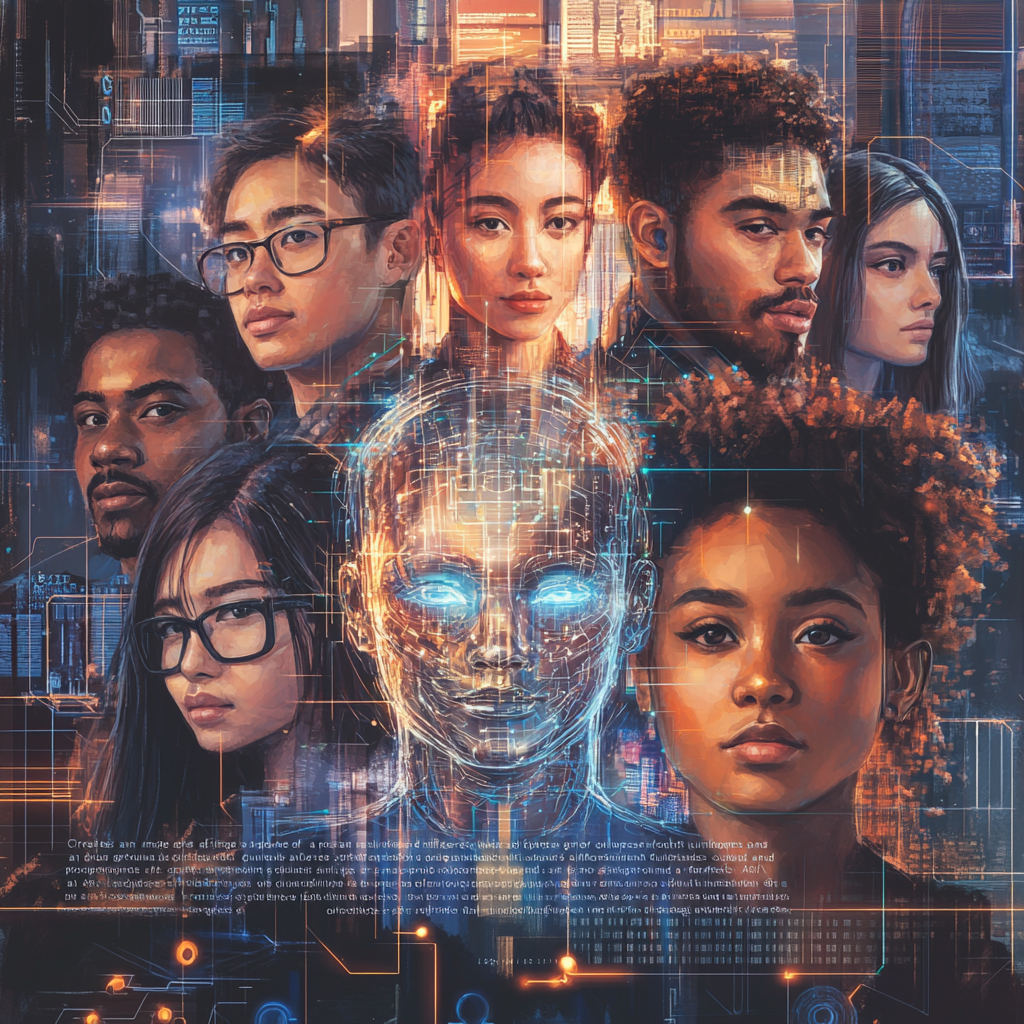
“Enhancing Trust Through Diverse AI Training Data”
In the wild world of artificial intelligence, a rather spicy topic has emerged, one that’s been sizzling on the stovetop of discussions: bias and fairness. Picture this: an AI system being trained on a buffet of diverse data—colors, backgrounds, and lifestyles all mixed together. Sounds ideal, right? It turns out, serving up a medley of perspectives can work wonders for how users perceive AI. That's a big deal when you're trying to earn trust and boost fairness.
Let’s dive into this data stew, shall we?
When you dish out AI systems trained with an array of different data, you don’t just increase the flavor profile; you serve up fairer and less biased outcomes. Check out what some savvy researchers at Penn State have discovered. They tossed their hat into the ring with a study that showed how sprinkling in diverse racial cues in training data—along with a kaleidoscope of backgrounds for those labelers—can pump up users’ trust levels. Just like a pinch of salt enhances a dish, this diversity enriches the AI experience.
Here’s the kicker: Participants who were treated to a buffet of diversity were far more likely to trust the AI than those stuck with a plain, one-note version. It’s akin to the classic representativeness heuristic—where people nod along and think, “Ah, yes, this is fair,” just because what they see aligns with their own mental picture of diversity. If we really want to create AI systems that the masses can rally behind, it’s clear we need to think outside the box—no, scratch that, let’s think outside the whole kitchen!
Transparency is another secret ingredient in the recipe for trust. Just like how diners want to know where their food comes from and how it’s been cooked, AI users crave insights into the training data they’re dealing with. They want to see the data’s background, its composition, and, yes, how inclusive it is. By laying bare the nitty-gritty of the data, we not only cultivate trust but also sprinkle in accountability.
Check this out: Tools like Google’s What-If Tool and IBM’s AI Fairness 360 aren’t simply buzzing around for decorum—they’re trying to sniff out unfairness and bias. These clever machines analyze data and provide users with insights, making the process feel less like taking a leap into the unknown and more like sharing a meal among friends.
Now, there are companies that are already cooking up these principles to create a more inclusive and equitable AI world. Take Intel, for instance; they’re whipping up an Inclusion Index powered by AI to assess how diverse and inclusive their company culture really is. They’re benchmarking their diversity efforts and piecing together a wholesome image of what inclusivity truly looks like.
Meanwhile, Lenovo takes a stand on prioritizing fairness with their hiring process. They’re dishing out equal opportunities across the board by integrating inclusive practices into their AI algorithms. Their Product Diversity Office ensures that different perspectives are baked right into product design and development. Talk about serving up a complete meal!
But, of course, as we feast on the fruits of this progress, let’s not forget that bias can creep in through various routes—data bias, algorithm bias, human decision bias—you name it! Each of these can leave a sour taste in the mouth. So, let’s whip up some strategies to minimize these pesky biases.
For starters, let’s add some bite to our datasets! Dataset augmentation—sounds fancy, right? Simply put, it’s about tossing in more diverse data to help reduce bias. The key is to fling open the doors and let a myriad of demographics strut in so that every voice has its moment on stage.
We can also get clever with bias-aware algorithms that put fairness first. Consider methods that prioritize group fairness over individual fairness. Regularization techniques, ensemble methods, and all of that jazz can help ensure models steer clear of making biased predictions.
Then, there's post-processing decisions. Imagine adjusting the AI’s output to sprinkle a bit of fairness into the mix—like reweighting outcomes or recalibrating predictions to achieve demographic parity. It’s all about serving up results that everyone feels good about.
Yet, forward we march, there are hurdles to jump. For every advance, there’s the lurking shadow of distrust fueled by a lack of transparency. Users who are unaware of the biases intertwined within their AI systems might be unintentionally endorsing an inherited cycle of biased decision-making. Not ideal, right?
Moreover, biased training data can halt the smooth progression toward embracing diversity. It’s like trying to bake a cake without sugar—disappointing and flat. The future’s looking bright, though. We’re on the cusp of integrating explainable AI (XAI), a standout concept that aims to peel back the layers of AI decision-making. By clarifying the reasoning behind AI outcomes, XAI could create a more trustworthy relationship between humans and machines.
And researchers aren’t lounging about either; they’re cooking up rigorous bias detection and mitigation frameworks to ensure the dining table of AI is not just diverse, but truly inclusive.
So, to wrap it all up: the ethical use of AI training data is not just a garnish—it's the main course! By showcasing the diversity nestled within training data, we can serve a better meal of trust and perceived fairness.
We can take away some key points here:
- A well-rounded training dataset elevates trust and fairness in AI systems.
- It’s crucial to be transparent about the data being served to users.
- Strategies like dataset augmentation and bias-aware algorithms help keep uninvited biases at bay.
- And of course, our future banquet will benefit immensely from XAI and ongoing bias detection.
As we continue crafting a future where AI works for everyone, it's crucial to stay informed on the nuances and dynamics at play—because there’s always room for improvement in this complex banquet of AI ethics and fairness.
Want to stay up to date with the latest news on neural networks and automation? Subscribe to our Telegram channel: @channel_neirotoken
Remember, the future of AI is in our hands, guided by our commitment to fairness, transparency, and diversity. Be part of the conversation!

